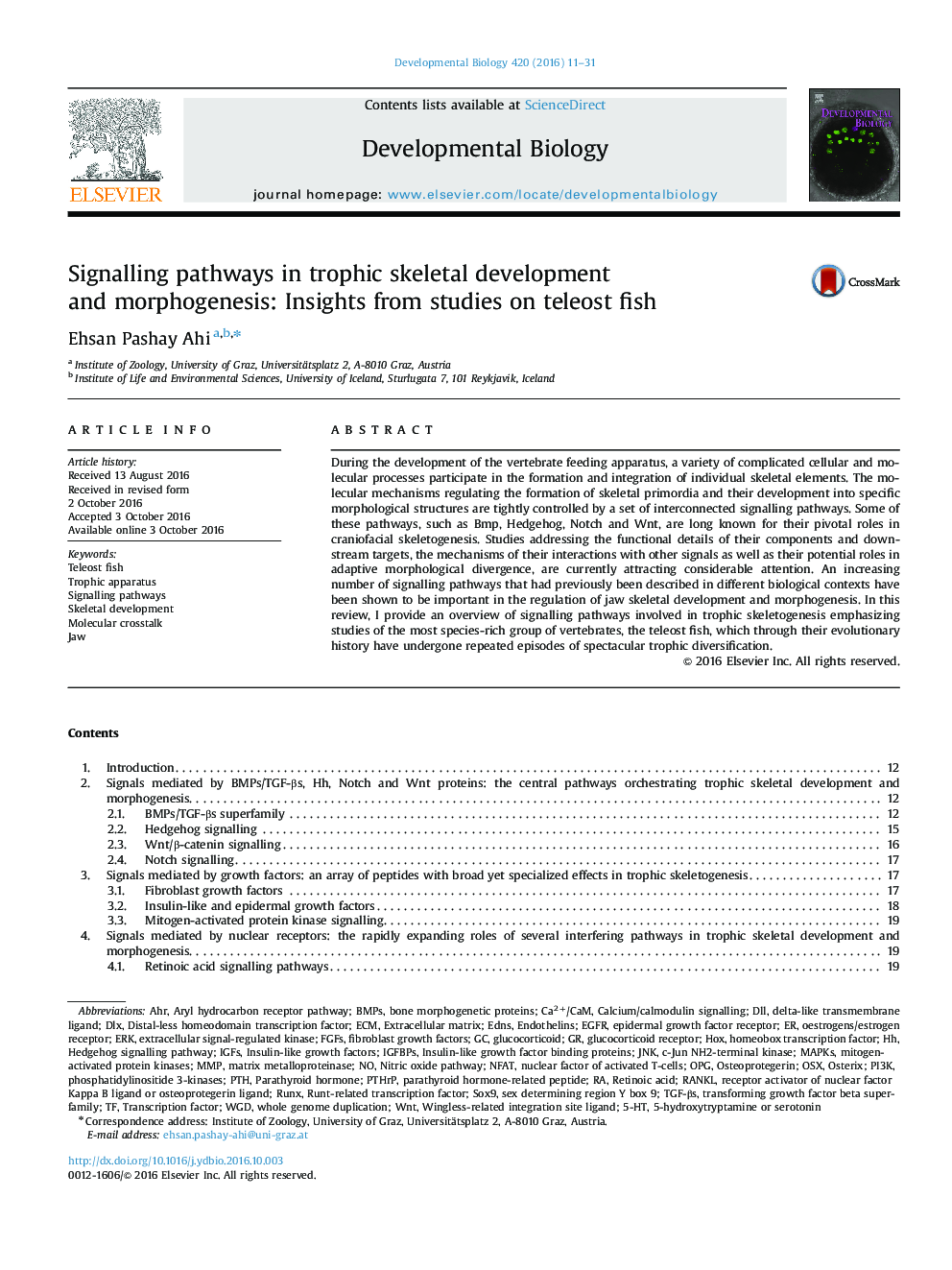| Article ID | Journal | Published Year | Pages | File Type |
|---|---|---|---|---|
| 5532035 | Developmental Biology | 2016 | 21 Pages |
â¢The development of trophic skeleton is controlled by an increasing number of signalling cascades.â¢These signals are interconnected and yet have specific roles in trophic skeletogenesis.â¢These signals might exert their effects through overlapping downstream effectors.â¢Teleost fishes represent remarkably diverse trophic morphologies across vertebrates.â¢Teleost fishes provide excellent opportunities to investigate these developmental signals.
During the development of the vertebrate feeding apparatus, a variety of complicated cellular and molecular processes participate in the formation and integration of individual skeletal elements. The molecular mechanisms regulating the formation of skeletal primordia and their development into specific morphological structures are tightly controlled by a set of interconnected signalling pathways. Some of these pathways, such as Bmp, Hedgehog, Notch and Wnt, are long known for their pivotal roles in craniofacial skeletogenesis. Studies addressing the functional details of their components and downstream targets, the mechanisms of their interactions with other signals as well as their potential roles in adaptive morphological divergence, are currently attracting considerable attention. An increasing number of signalling pathways that had previously been described in different biological contexts have been shown to be important in the regulation of jaw skeletal development and morphogenesis. In this review, I provide an overview of signalling pathways involved in trophic skeletogenesis emphasizing studies of the most species-rich group of vertebrates, the teleost fish, which through their evolutionary history have undergone repeated episodes of spectacular trophic diversification.
